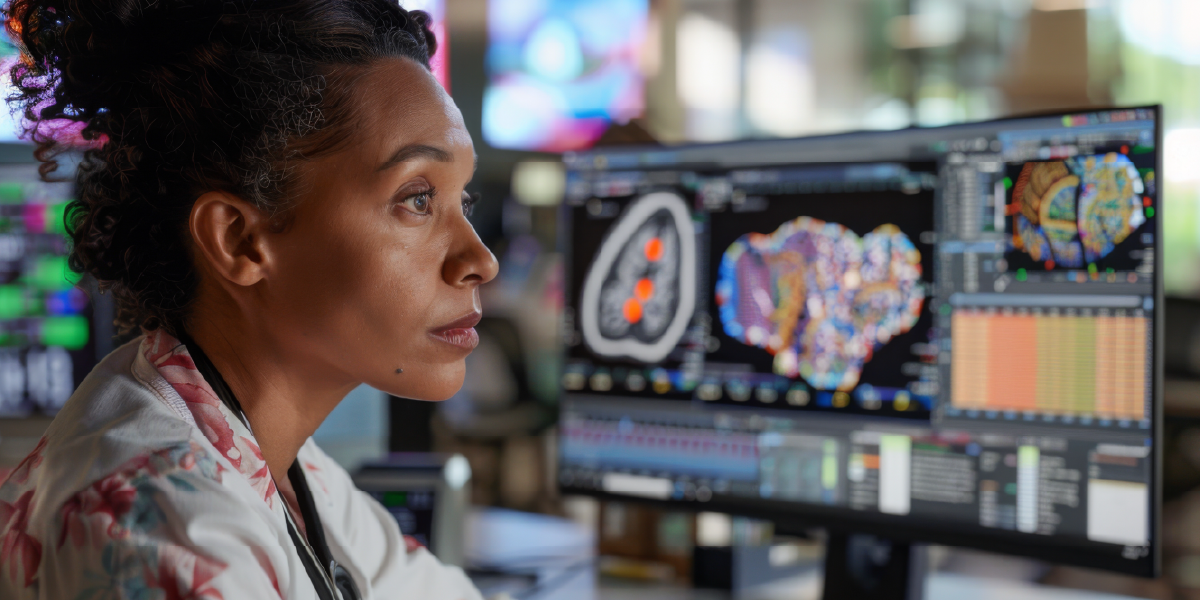Nurses, doctors, surgeons, and other healthcare professionals understand the strain of life in the hospital. Often, it involves immense physical and mental demands day in and day out, resulting in inefficiencies, burnout, and higher healthcare costs. Researchers at Kennesaw State University (KSU) want to combat these challenges by using wearable exoskeletons and eye-tracking sensors to streamline workflows and improve patient care.

Researchers at KSU’s Human Factors, Operations Optimization, and Ergonomics Lab (also known as the HOPE Lab), are combining healthcare insights with industrial engineering to redesign systems and processes, aiming to reduce pain points for patients and healthcare workers.
Awatef Ergai, an associate professor in KSU’s Southern Polytechnic College of Engineering and Engineering Technology, said the inefficiencies of current healthcare workflows cause unnecessary strain on processes. The use of eye-tracking sensors will provide objective insights into how healthcare staff engage with their environment during patient care, identifying inefficiencies, cognitive workload, and key focus areas. This data helps optimize workflows, enhance patient safety, and improve training.
“Inefficient healthcare workflows are not only ineffective, but they also drive up costs and put avoidable pressure on both patients and providers,” Ergai explained. “By redesigning these processes to be more patient- and provider-centric, we can eliminate inefficiencies, enhance patient safety, improve healthcare quality, and ultimately make healthcare more affordable, safer, and more effective for everyone.”
Valentina Nino, an assistant professor of industrial and systems engineering, said the lab focuses on eliminating workflow friction by addressing cognitive and physical design aspects.
For example, the eye-tracking sensors will monitor where healthcare workers focus their attention and reveal distractions. A common workflow setback happens when nurses repeatedly shift focus between charts and patient care, leading to interruptions and delayed decision-making. By analyzing this data, the team can suggest changes to workflow layouts, user interfaces, and training protocols that help improve concentration and reduce errors.
The HOPE lab works in the integration of technology at the point of care. The team has developed a decision-making support system that includes a wearable device and a mathematical model to help triage nurses make decisions in the emergency department. The wireless wearable device collects vital signs continuously and sends the data to a mathematical model that provides a sorted list based on patient criticality. The system is also equipped to send alerts to healthcare providers in case a patient needs immediate attention. This technology is especially helpful in high-stress situations, such as emergency rooms or intensive care units (ICUs), where quick decision-making and clear focus are critical.
Just as Tony Stark dons his Iron Man suit to take on the world, healthcare workers could soon suit up for a different kind of mission. Wearable exoskeletons, motion capture devices, and EMG sensors being developed out of the HOPE Lab will play a role in improving the physical ergonomics of healthcare work.
Exoskeletons support healthcare workers by reducing the physical toll of repetitive tasks—lifting, bending, and reaching. The sensors pinpoint when a movement will cause stress on the muscles and joints, allowing real-time assistance mechanization to relieve the weight of the task.
Musculoskeletal injuries, common in many industries, are a concern for workplace safety. Introducing technology that scales down repeated exposure to force, could reduce absences and turnover, allowing workers to perform their duties more sustainably.
“Our goal is to evaluate if their incorporation into healthcare tasks will benefit both providers and patients,” Nino said.
In collaboration with Wellstar Health System and KSU’s Coles College of Business, the team aims to refine its research based on how it performs in the real world. These partnerships provide valuable feedback to test designs in clinical settings, ensuring the solutions truly meet the needs of healthcare professionals.
For this project, all hands are on deck. KSU’s Wellstar College of Health and Human Services unites healthcare experts Doreen Wagner, Mark Geil, and Katherine Ingram with Coles College of Business specialists Sweta Sneha and Adriane Randolph to drive innovation. At the College of Computing and Software Engineering, Maria Valero, Yong Shi, and Paola Spoletini collaborate closely with Israel Sanchez-Cardona at Radow College to focus on technology development and practical implementation. By using this interdisciplinary approach, these research teams ensure that the solutions they create are both practical and rooted in real healthcare challenges.
HOPE Lab also seeks to address rising healthcare costs and the growing issue of burnout among healthcare workers, who often work long hours in high-stress environments with physically demanding tasks.
“By improving the physical sustainability of healthcare work, we’re contributing to a healthier workforce, which in turn leads to better patient care,” Nino said.
As the healthcare industry evolves, KSU researchers envision a future where human-centered design principles and advanced technology seamlessly integrate into everyday healthcare practice.
“We want to create a system where technology works for the people who use it, not the other way around,” Nino said.
At KSU, we don’t just explore theories—we turn them into real-world solutions that drive progress. Whether in healthcare, technology, or beyond, our commitment to innovation equips professionals with the tools, support, and knowledge they need to make a measurable impact where it matters most.